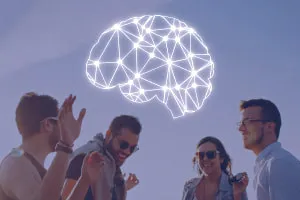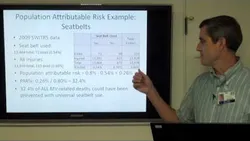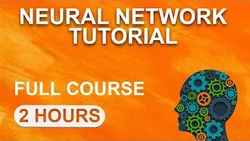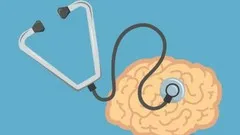
Neuroscience Introduction 
Neuroscience is a field of study that explores the biological basis of behavior and cognition. Karl Friston's Free Energy Principle, Uta Frith's Theory of Mind, Chris Frith's work on empathy, Barbara Sahakian and Serious Science's research on cognitive-enhancing drugs, and Robert Plomin's studies on the neural basis of social interaction are all important contributions to this field. ▼
ADVERTISEMENT
Course Feature
![]() Cost:
Cost:
Free
![]() Provider:
Provider:
Youtube
![]() Certificate:
Certificate:
Paid Certification
![]() Language:
Language:
English
![]() Start Date:
Start Date:
On-Demand
Course Overview
❗The content presented here is sourced directly from Youtube platform. For comprehensive course details, including enrollment information, simply click on the 'Go to class' link on our website.
Updated in [February 21st, 2023]
Free Energy Principle — Karl Friston.
Theory of Mind - Uta Frith.
Empathy - Chris Frith.
Cognitive-Enhancing Drugs — Barbara Sahakian / Serious Science.
DNA and Behavioral Genetics - Robert Plomin.
Neural Basis of Social Interaction - Chris Frith.
Hot and Cold Cognition — Barbara Sahakian.
Brain Training — Barbara Sahakian.
Interacting Minds Cris Frith.
Autism — Uta Frith.
Spatial Navigation — Neil Burgess.
Cell Membranes - Richard Henderson.
Biological Bases of Economic Behavior.
Money and Neuroeconomics.
Neuroeconomics of Decision making — Sacha Bourgeois-Gironde.
Neuropragmatics and Language Therapy — Friedemann Pulvermuller.
Brain Language Research — Friedemann Pulvermuller / Serious Science.
Neuroeconomics - Jan Engelmann.
Neuroeconomics — Jan Engelmann / Serious Science.
Samuel McClure – Temporal discounting.
Samuel McClure – Dopamine system.
Samuel McClure – Winners curse.
Analysis of Neuronal Circuits - Catherine Dulac.
Genomic Imprinting and the Brain - Catherine Dulac.
Brain Function and Chromatin Plasticity - Catherine Dulac.
Neurobiology of Behavior – Catherine Dulac.
Synapse Elimination at the Developing Neuromuscular Junction – Jeff Lichtman Alert icon.
The Role of Neuronal Identity in Synaptic Competition - Jeff Lichtman.
Developmental Neurobiology - Jeff Lichtman.
Connectomics - Jeff Lichtman.
The Difference Between Sleep and Anesthesia - Emery Brown.
General Anesthesia - Emery Brown.
Controlling and Reanimating the Brain — Emery Brown / Serious Science.
Neurophilosophy and moral values - Patricia Churchland.
Neurophilosophy – Patricia Churchland.
Neurophilosophy and free will - Patricia Churchland.
Propofol as a Widely Used Anesthetic – Emery Brown / Serious Science.
Modelling Neurodegenerative Diseases with Stem Cells - Maya Mitalipova.
Social neuroscience - Mahzarin Banaji.
Neural Networks – Erol Gelenbe / Serious Science.
Cognition Without a Cortex — Onur Gunturkun / Serious Science.
Dyslexia — Uta Frith / Serious Science.
Amyotrophic Lateral Sclerosis — Kevin Talbot / Serious Science.
Voluntary Action — Patrick Haggard / Serious Science.
Neurobiology of Mood Disorders — Guy Goodwin / Serious Science.
Motor Neurons — Kevin Talbot / Serious Science.
Tactile Sensitivity — Patrick Haggard / Serious Science.
(Please note that we obtained the following content based on information that users may want to know, such as skills, applicable scenarios, future development, etc., combined with AI tools, and have been manually reviewed)
1. Neuroscience Introduction course provides learners with a comprehensive overview of the field of neuroscience. Learners can gain knowledge about the fundamentals of neuroscience, including the structure and function of the brain, the role of neurotransmitters, and the effects of drugs on the brain. They can also learn about the latest research in the field, such as the Free Energy Principle, Theory of Mind, Empathy, Cognitive-Enhancing Drugs, DNA and Behavioral Genetics, Neural Basis of Social Interaction, Hot and Cold Cognition, Brain Training, Interacting Minds, Autism, Spatial Navigation, Cell Membranes, Biological Bases of Economic Behavior, Money and Neuroeconomics, Neuroeconomics of Decision making, Neuropragmatics and Language Therapy, Brain Language Research, Neuroeconomics, Samuel McClure – Temporal discounting, Samuel McClure – Dopamine system, Samuel McClure – Winners curse, Analysis of Neuronal Circuits, Genomic Imprinting and the Brain, Brain Function and Chromatin Plasticity, Neurobiology of Behavior, Synapse Elimination at the Developing Neuromuscular Junction, The Role of Neuronal Identity in Synaptic Competition, Developmental Neurobiology, Connectomics, The Difference Between Sleep and Anesthesia, General Anesthesia, Controlling and Reanimating the Brain, Neurophilosophy and moral values, Neurophilosophy, Neurophilosophy and free will, Propofol as a Widely Used Anesthetic, Modelling Neurodegenerative Diseases with Stem Cells, Social neuroscience, Neural Networks, Cognition Without a Cortex, Dyslexia, Amyotrophic Lateral Sclerosis, Voluntary Action, Neurobiology of Mood Disorders, Motor Neurons, and Tactile Sensitivity.
2. Learners can gain an understanding of the biological basis of behavior and the role of the brain in regulating behavior. They can learn about the different types of neurons and how they interact to form neural networks, as well as the role of neurotransmitters in regulating behavior. They can also learn about the effects of drugs on the brain and how they can be used to treat various neurological disorders. Additionally, learners can gain an understanding of the role of genetics in behavior and how it can be used to predict and treat certain conditions.
3. Learners can gain an understanding of the neuroscience of decision-making and how it can be used to make better decisions. They can learn about the role of the brain in decision-making, as well as the role of emotions and other factors in influencing decisions. Additionally, learners can gain an understanding of the neuroscience of social interaction and how it can be used to improve communication and relationships. They can also learn about the neuroscience of language and how it can be used to improve language skills.
4. Learners can gain an understanding of the neuroscience of sleep and how it can be used to improve sleep quality. They can learn about the different stages of sleep and how they affect the body and mind. Additionally, learners can gain an understanding of the neuroscience of pain and how it can be used to manage pain. They can also learn about the neuroscience of addiction and how it can be used to treat addiction.
5. Learners can gain an understanding of the neuroscience of mental health and how it can be used to treat mental health disorders. They can learn about the different types of mental health disorders and how they can be treated using neuroscience. Additionally, learners can gain an understanding of the neuroscience of learning and how it can be used to improve learning outcomes. They can also learn about the neuroscience of memory and how it can be used to improve memory recall.
Course Provider

Provider Youtube's Stats at AZClass
Discussion and Reviews
0.0 (Based on 0 reviews)
Explore Similar Online Courses

Biostatistics and Epidemiology Lecture Series

Neural Network Tutorial Artificial Neural Network Backpropagation in Neural Networks AI Course

Python for Informatics: Exploring Information

Social Network Analysis

Introduction to Systematic Review and Meta-Analysis

The Analytics Edge

DCO042 - Python For Informatics

Causal Diagrams: Draw Your Assumptions Before Your Conclusions

Whole genome sequencing of bacterial genomes - tools and applications

Control Your Subconscious Mind: Neuroscience Hidden Secrets

Perform an Excellent Neurological Bedside Exam


Start your review of Neuroscience Introduction